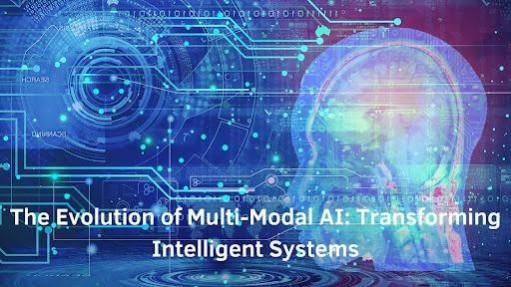
In today's fast-evolving business landscape, artificial intelligence has undergone a significant transformation with the emergence of multi-modal generative AI models. Unlike traditional AI systems that process single data types, these advanced models integrate and generate diverse formats, including text, images, and audio. Shahzeb Akhtar, a leading researcher in the field, explores the architecture, benefits, applications, and challenges of this breakthrough technology. His insights offer a glimpse into the potential of AI to revolutionize industries and enhance human- computer interactions.
Breaking Barriers with Multi-Modal AI
Multi-modal AI revolutionizes artificial intelligence by integrating diverse data sources for richer, context-aware interactions. Unlike traditional AI, which operates within a single modality, like text or images, multi-modal AI seamlessly bridges these domains, enhancing comprehension and decision-making. This innovation mimics human perception, where meaning arises from multiple sensory inputs. By synthesizing information across text, visuals, and audio, multi-modal AI significantly improves responsiveness, making AI interactions more natural, intuitive, and adaptable across various applications.
The Core Components of Multi-Modal AI
Multi-modal AI relies on three core components: unimodal encoders, fusion networks, and classifier/generator modules. Unimodal encoders process different data types separately, ensuring effective feature extraction from each modality. The fusion network then integrates these diverse inputs, forming a cohesive representation that enables cross-modal interactions. This integration enhances the model's ability to understand relationships between different data types. Finally, the classifier or generator interprets the fused data, making predictions or generating outputs across multiple formats. By combining these elements, multi-modal AI enables more robust decision-making, improved contextual understanding, and seamless adaptability across various applications, from healthcare to autonomous systems.
Unlocking New Possibilities Across Industries
The versatility of multi-modal AI extends across numerous domains. In content creation, AI-generated visuals and narratives complement each other, enhancing storytelling experiences. In healthcare, multi-modal models improve diagnostic accuracy by integrating medical imaging with patient history. Autonomous systems, including self-driving cars, benefit from AI that processes visual, auditory, and spatial data simultaneously, enhancing decision-making capabilities. The integration of these modalities is paving the way for smarter, more responsive AI applications.
Enhancing Creativity and Accessibility
One of the most promising aspects of multi-modal AI is its ability to enhance creative expression. Artists and designers can leverage AI-generated content that seamlessly combines different media forms. Additionally, accessibility tools powered by multi-modal AI can assist individuals with disabilities by converting text into speech, generating descriptive imagery, or offering real-time translations. These innovations highlight the transformative impact of AI on communication and inclusivity.
Challenges on the Road to Advancement
Despite its potential, multi-modal AI development faces notable hurdles. Training these models requires extensive and diverse datasets, which are often scarce or fragmented. The computational demands of processing multi-modal data are also significant, necessitating advanced hardware and optimized architectures. Ethical considerations, such as bias in AI-generated content and data privacy concerns, further complicate widespread deployment. Addressing these challenges is crucial to ensuring responsible and effective AI implementation.
The Future of Multi-Modal AI
As research progresses, the next frontier in multi-modal AI lies in refining model architectures, improving data efficiency, and mitigating biases. Innovations in neural networks, such as transformer-based fusion mechanisms, promise more accurate and context-aware outputs. The integration of real-time multi-modal AI systems into everyday technology will redefine user interactions, from virtual assistants to immersive digital experiences. The evolution of this technology is poised to reshape how AI engages with the world around us.
In conclusion, Shahzeb Akhtar's research highlights the immense potential of multi-modal AI to drive the next wave of intelligent systems. As AI continues to evolve, these models will play a pivotal role in enhancing automation, creativity, and human-AI collaboration, ultimately bridging the gap between machine intelligence and human cognition.









